Is it possible for one little book to cause such a scandal? About a beautiful game, a spicy diary and a Polish prince. And the whole story was described by Gabriela Pauszer-Klonowska in the newly reissued biography of Izabela Czartoryska.
Armand Louis de Gontaut, Duke de Lauzun, Duke de Biron, on the Vistula River, better known as the "Duchess of Lausanne", was born in 1747. From an early age he grew up at the French court. As he writes in his memoirs at the court, to be precise, I spent the first years of my childhood on the lap of the royal mistress. (This is Madame de Pompadur, of course).
As a fifteen-year-old boy, he was a famous playboy, one of the greatest bachelors of the French court. By the will of his father, who was closely friends with Louis XV, he married the heiress of a huge fortune, Amelia de Boufflers.
The wedding took place in 1766. It was originally planned for 1763, but Armand was then in love with someone else and begged his father to postpone it for two years. At the time they marched, Armand was 19 and Amelia 14. From the beginning, de Lauzun had a poor reputation among the ladies of Paris. Following the fashion of the time, he was only friends with his wife, and he sought love in the arms of other women. Lots of women.
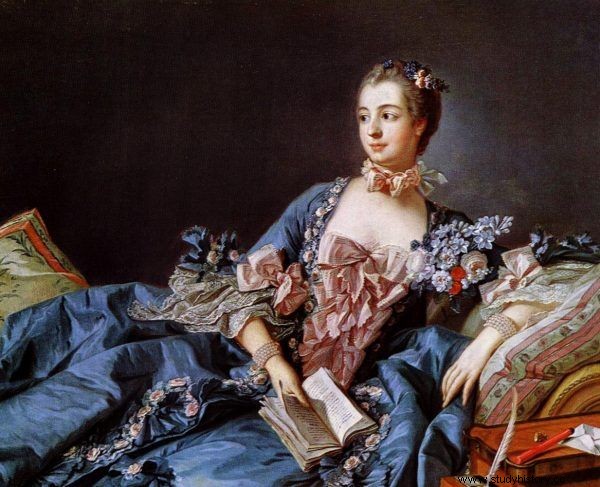
Duczek Lausanne spent his childhood "on the lap" of this beautiful lady, royal lover, Madame de Pompadour. Painting by François Boucher (source:public domain).
Duczek Lausanne was as brave as a lion in war. He took part in the fight for the independence of the United States (of course on the American side), and during the Great French Revolution he became a general. Besides his war fame, he also earned a reputation as a salon lion. He described its sources in detail in his memoirs. Exactly:diaries…
Where the devil cannot, he will send a woman there…
At the request of one of his lovers, Armand de Lauzun described his adventures and conquests in 1759-1783. His diaries were very detailed and did not overlook even the most piquant matters. They first appeared in print thirty years after the death of Armand and his last mistress. The adventures of de Lauzun's "work" were as interesting as its content.
In 1811, the manuscript of the diaries, found in the prince's private belongings, was confiscated by the Napoleonic police. The content was so controversial that people feared an outbreak of a loud scandal (the ladies described in it, at the time of its discovery, were already noble wives, mothers, matrons of famous families).
The embarrassing text was therefore ordered to be destroyed. But as you know ... where the devil cannot, he will send a woman there. This is where Her Majesty Hortensia, Queen of the Netherlands, enters the stage. The daughter of Empress Josephine obtained the opportunity to read the diaries from the emperor who was very affectionate about her. Ah, this female curiosity!
Having read the manuscript, Hortensia wished to have a copy of it. So she had it rewritten a secret and kept a copy that kept Armand de Lauzun's secrets alive. The original "died a tragic death" - it was burned in the presence of the French Emperor, who personally made sure that this "dangerous" work would disappear from the face of the earth.
Almost ten years later, in 1821, the memoirs first appeared in print. They were released by the famous Parisian publisher Barrois. As expected, the book caused quite a storm. As Gabriela Pauszer-Klonowska writes, the second edition (1858) was entirely confiscated at the request of ... the Polish Czartoryski family.
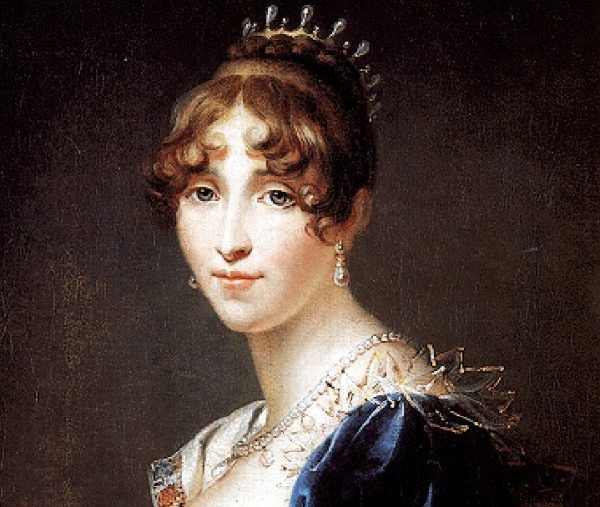
Had it not been for the meddling of Hortense de Beauharnais, daughter of Empress Josephine, the actions of the Lausanne duchess would probably not have come to light. Painting by François Gérard (source:public domain).
The French diarist and the Polish case
Why exactly did Adam Czartoryski, who headed the "Hôtel Lambert", request the confiscation of de Lauzun's diaries with considerable firmness? Well, the beautiful Frenchman had a very "fruitful" episode with his mother in his youth.
Izabela Czartoryska, or rather Elżbieta Czartoryska née Flemming, was not one of the most faithful wives. The young duchess did not have a deep attachment for her spouse - Prince Adam Kazimierz Czartoryski, but with reciprocity.
Both Czartoryski Principality looked for happiness in numerous romances (there were even rumors that none of the children born to Izabela were fathered by her husband). Anyway, during one of the journeys "Pani na Puławy" she met a charming French.
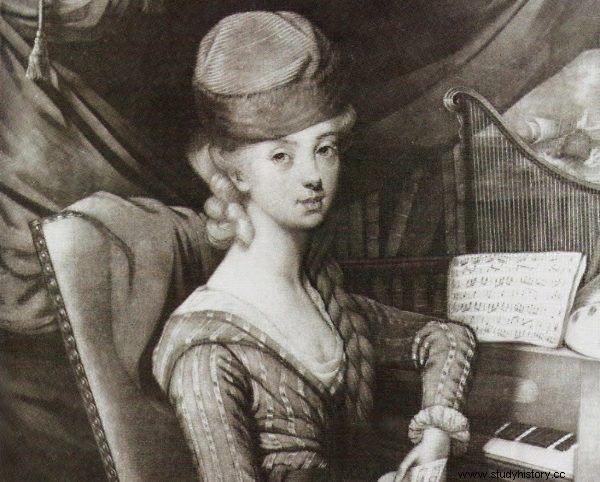
The go-getter Izabela Czartoryska charmed the puppet from Lausanne. Image by Giuseppe Filippo Liberati Marchi (source:public domain).
In his memoirs, Lauzun described the moment when he saw his future mistress for the first time: A lady entered the room, better dressed and better combed than usually English women. I asked who he is. In reply, I heard that she was a Pole, Duchess Czartoryska.
At the time, Izabela shone in London salons. Besides, not alone, because she was accompanied by her husband and in love with Princess Repnin (yes, that Repnin - former Russian ambassador to Warsaw). The four of them continued their journey, accompanied by Lauzun.
This article has more than one page. Please select another one below to continue reading.Attention! You are not on the first page of the article. If you want to read from the beginning click here.
Soon an affair broke out between the duchess and the young duke, which then turned into a passionate feeling. Let us add that the beginning of this romance was not particularly happy:after her first night with the "Lausanne Duchess", Izabela tried to poison herself. Was it remorse after realizing that she was cheating on her husband and Repnin's devoted to her at the same time?
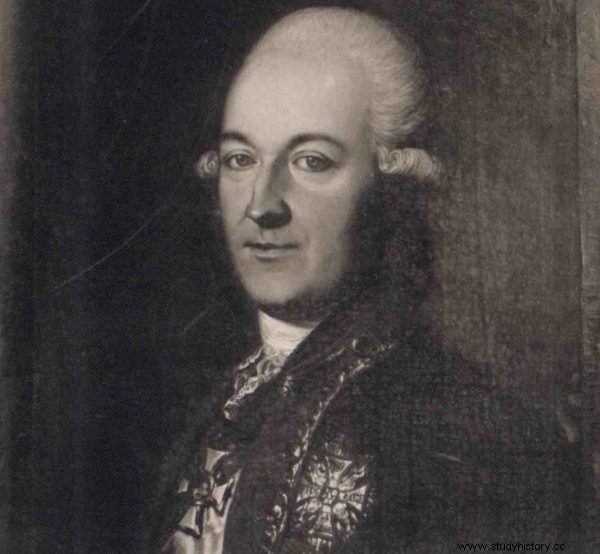
Repnin could feel like a fourth wheel in a two-wheeler ... Russian ambassador in a painting from 1779.
On the news of such a development, the Duke also made an attempt to take his own life. Although, who knows, maybe it was all a masquerade, because somehow none of them managed to kill themselves. By the way, de Lauzun's recovery was then taken care of by ... his wife, Amelia.
This is not the end of the melodrama. When the duchess decided to return to Warsaw, it turned out that she was pregnant. She demanded that de Lauzun go to Wrocław at the same time and expect news from her there. Izabela herself was to reveal everything to her husband. She did so, and before the dissolution, the Duke arrived in Warsaw. He was watching his son's birth, hidden in the wardrobe by the maid.
On October 28, 1774, Konstanty Aleksander Adam Tadeusz Czartoryski was born. In the biographies, the date is moved back a year (to 1773) to spare Adam Kazimierz shame, who then traveled separately, without a wife and could not be the father of this child. Izabela's husband made one condition - he allowed her to keep the child, as long as she never saw her real father.
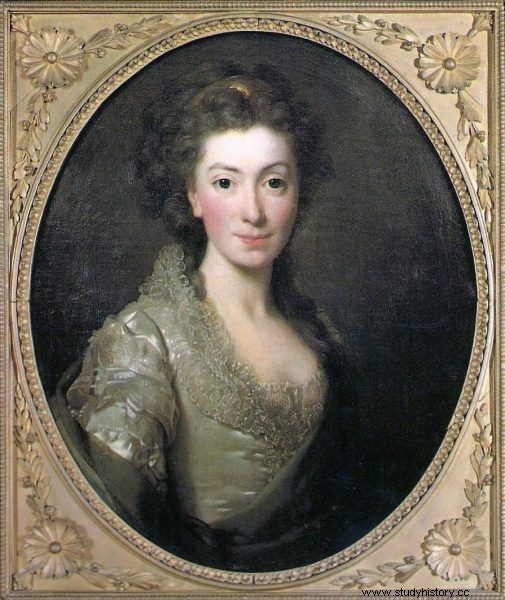
Princess Izabela Czartoryska, under the influence of her husband, ended her romance with Lauzun ... to throw herself into the arms of other lovers. Painting by Alexander Roslin from 1774.
In the end, the lovers were separated. They still corresponded, and de Lauzun strove for some diplomatic function, if not in Warsaw, then in St. Petersburg, but without success. This is how the development of events was described by the Duke in his memoirs:
The Duchess's letters kept getting shorter and rarer. I was informed from Warsaw that Mr. Branicki was living with her. I wrote to her clearly, but my remarks were badly received. Imbued with pain, I replied with indignation and reproach. I dared to demand my child. I didn't want it to hide among my enemies. I didn't pick it up. We had an argument and the correspondence stopped.
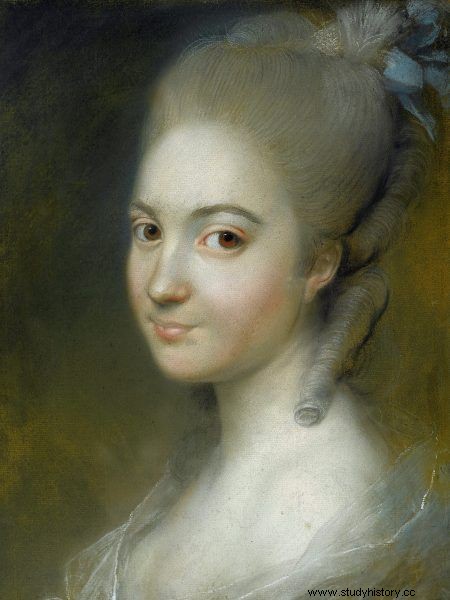
General Aleksandra Zajączkowa, it was she who brought de Lauzun's diaries to Poland.
De Lauzun's diaries were brought to Poland by General Aleksandra Zajączkow, who sincerely hated Duchess Adamowa Czartoryska. In this way, the memories of Armand, known as the Lausanne duch on the Vistula River, became a tool of mockery and insults directed at Izabela.
Therefore, it is not surprising that Adam Jerzy Czartoryski, who was concerned with the good name of his "Hotel Lambert", tried to block the distribution of a book that was ruining his mother's reputation. However, all this was already happening in the new era, not in the times of magnate decadence, in which the amorous duchess experienced her romances.
***
The biography of "Pani na Puławy" by Gabriela Pauszer-Klonowska was first published in 1978. It has just been re-issued (in an elegant, richly illustrated form) by the Warsaw publishing house Inicjał. You can buy it in the online bookstore of the Wydawc.com.pl portal. We encourage you to read it.
Source:
G. Pauszer-Klonowska, Lady in Puławy , Inicjał, Warsaw 2010.
